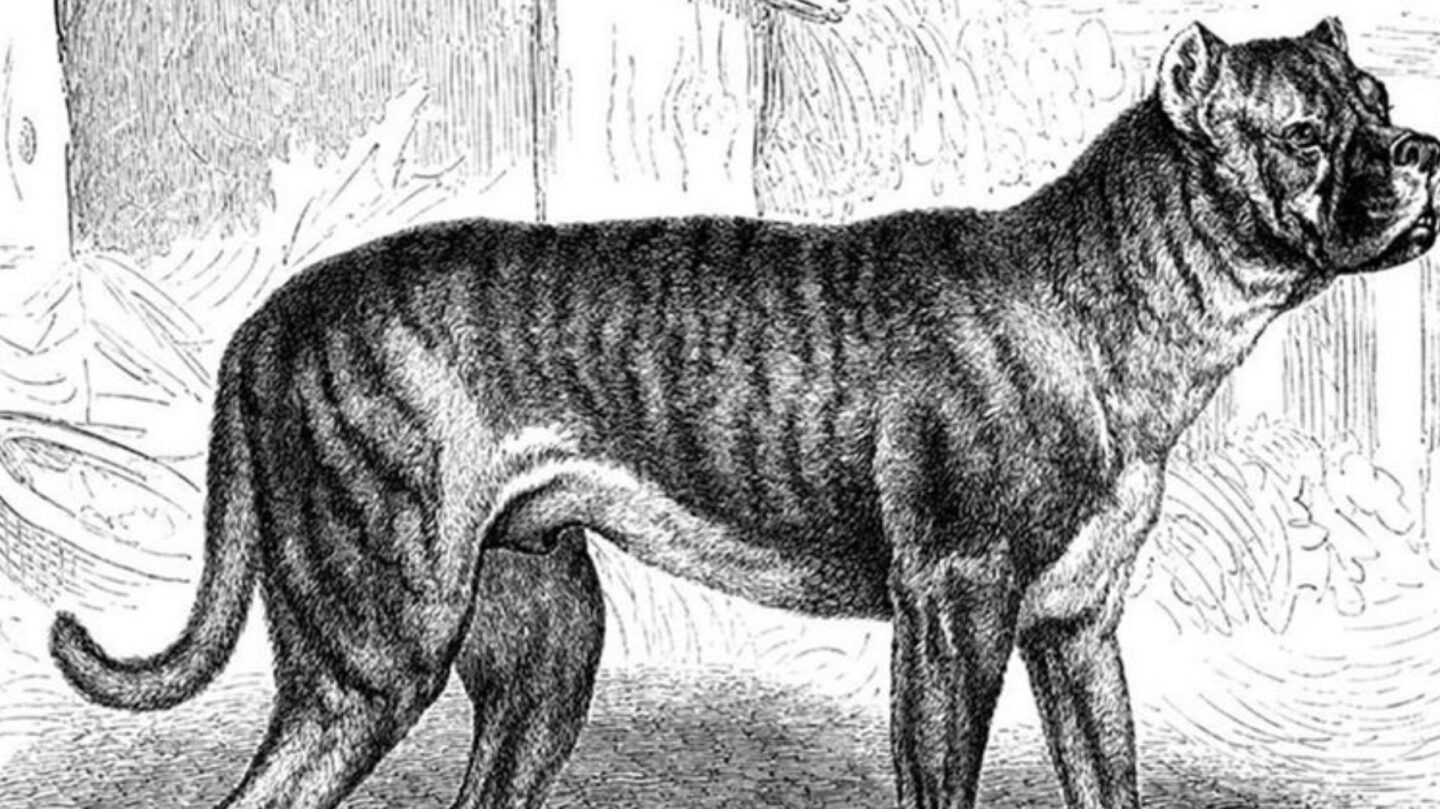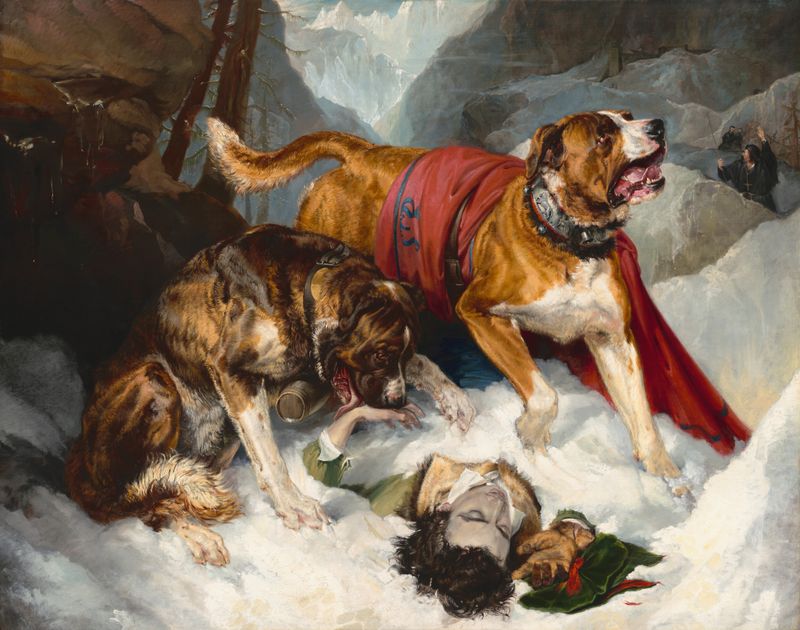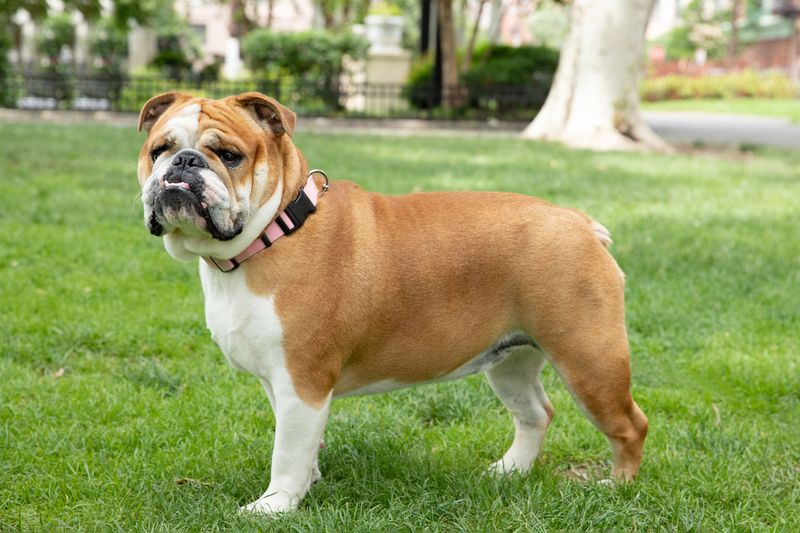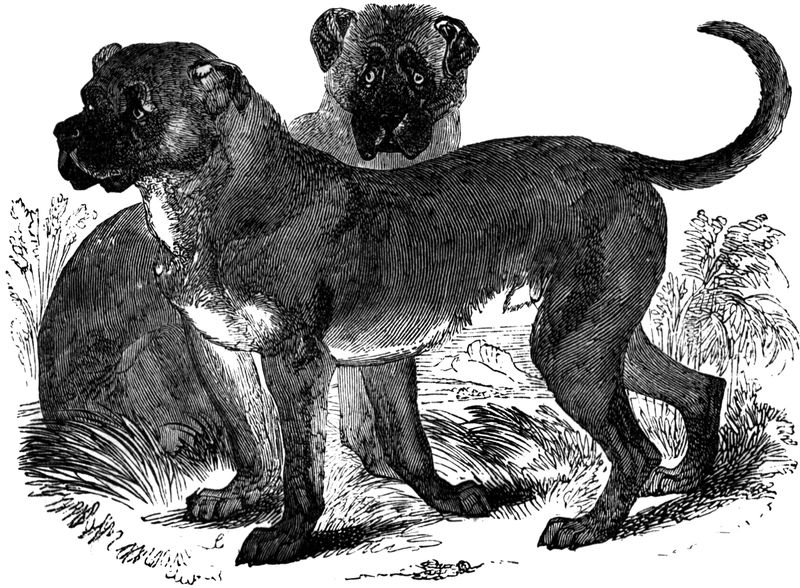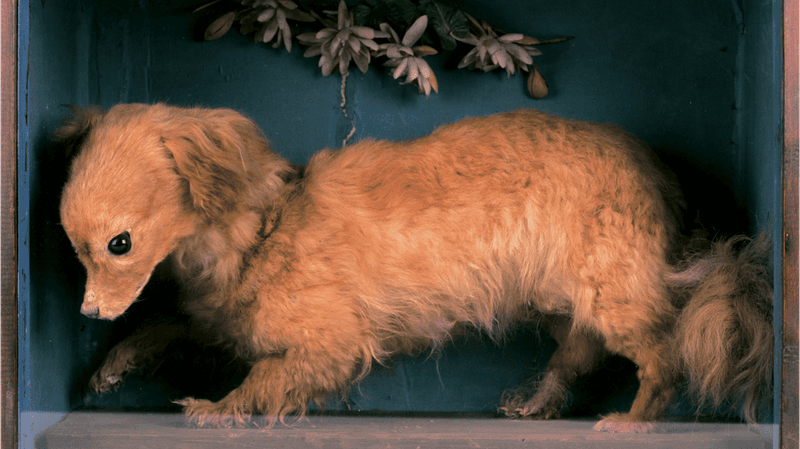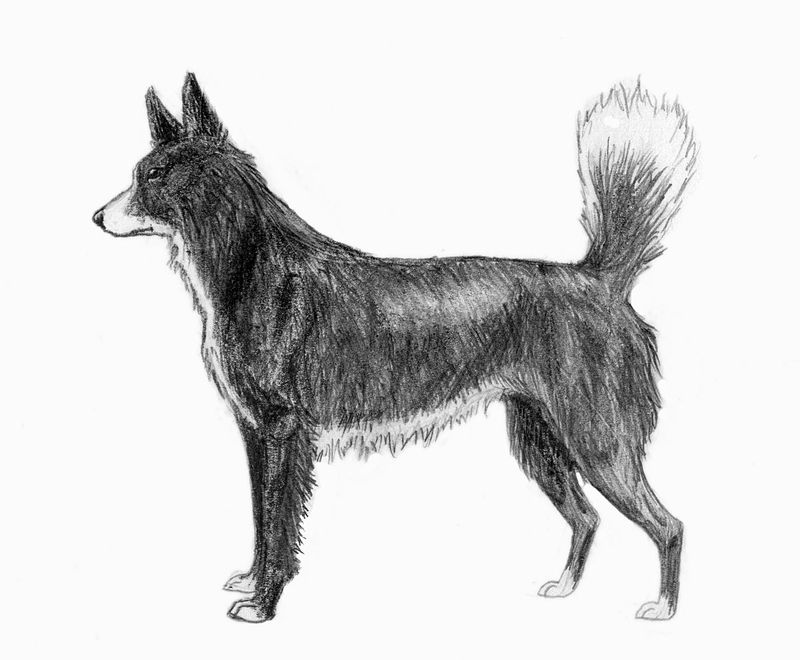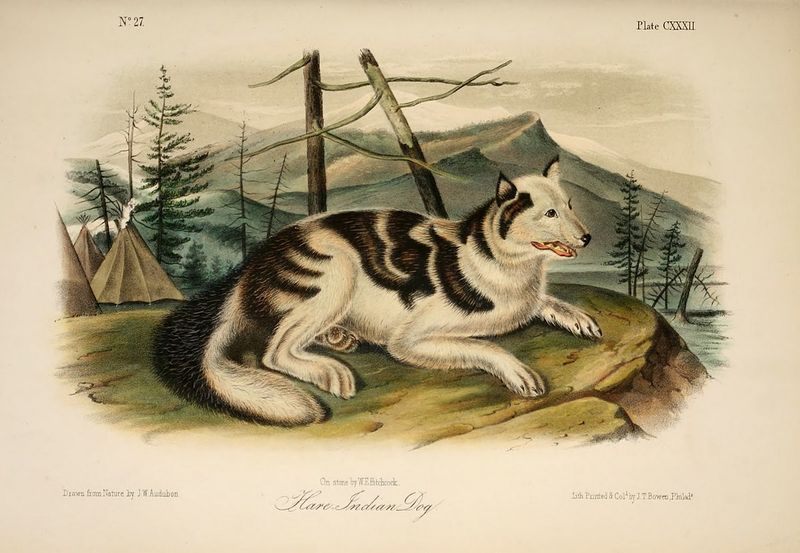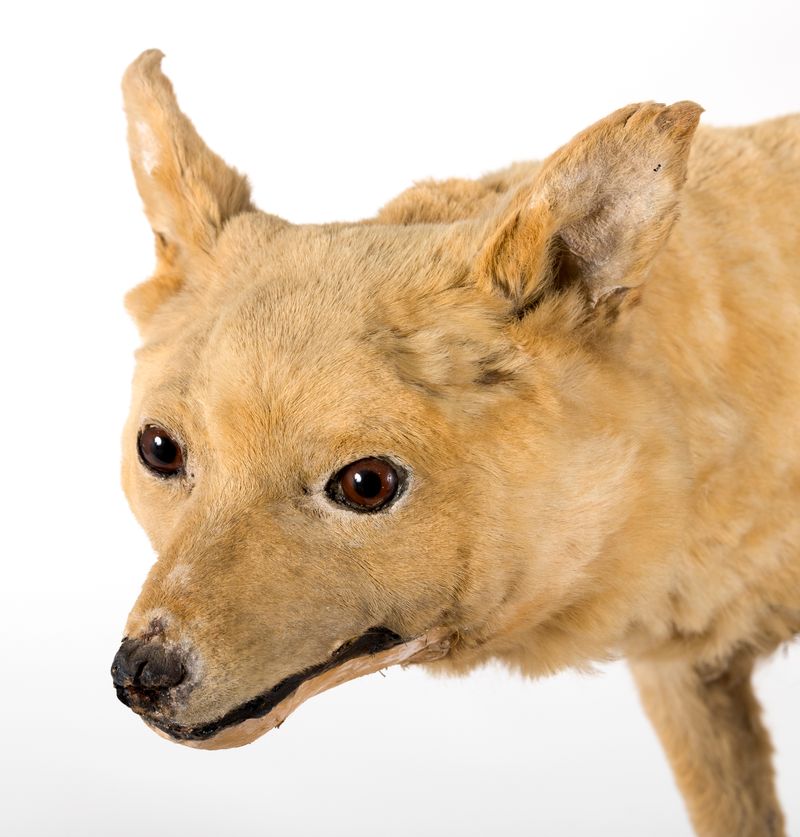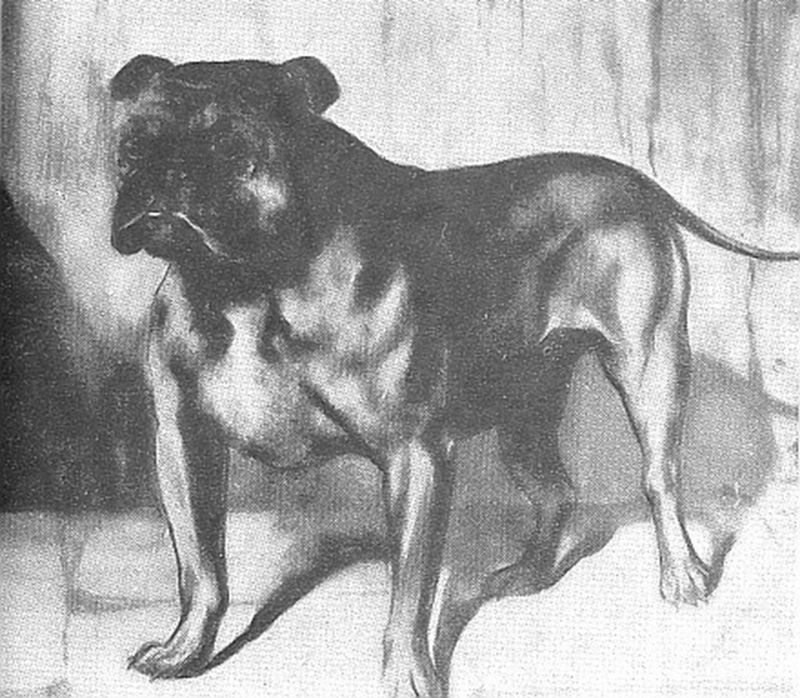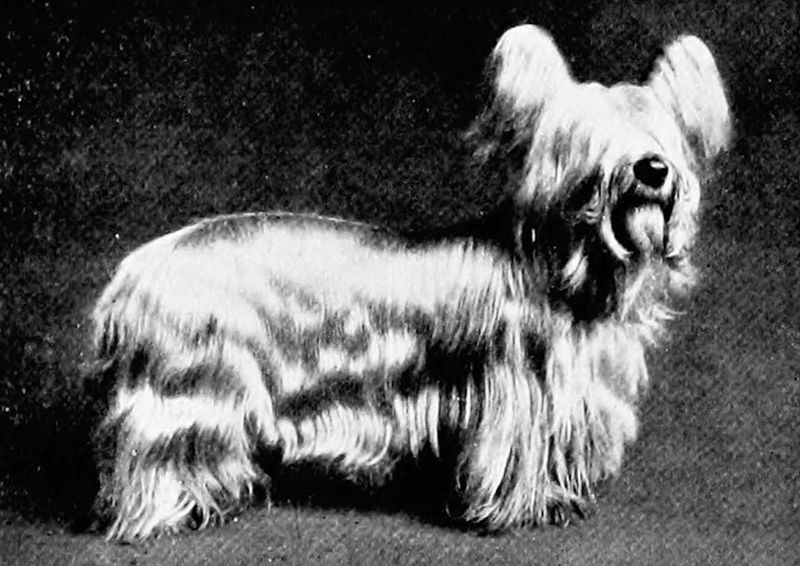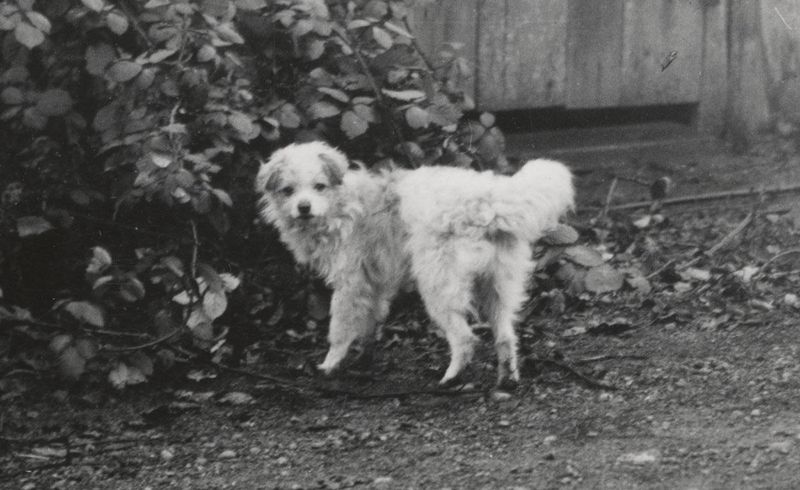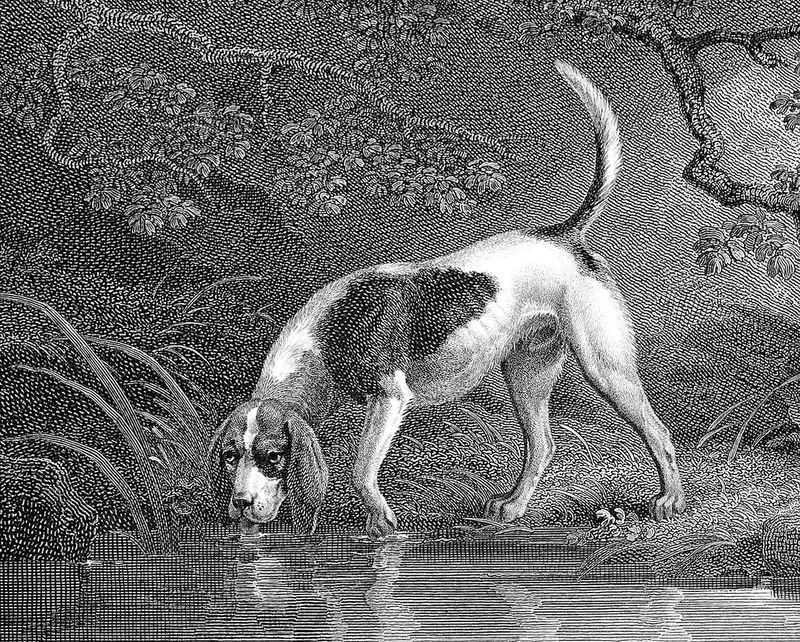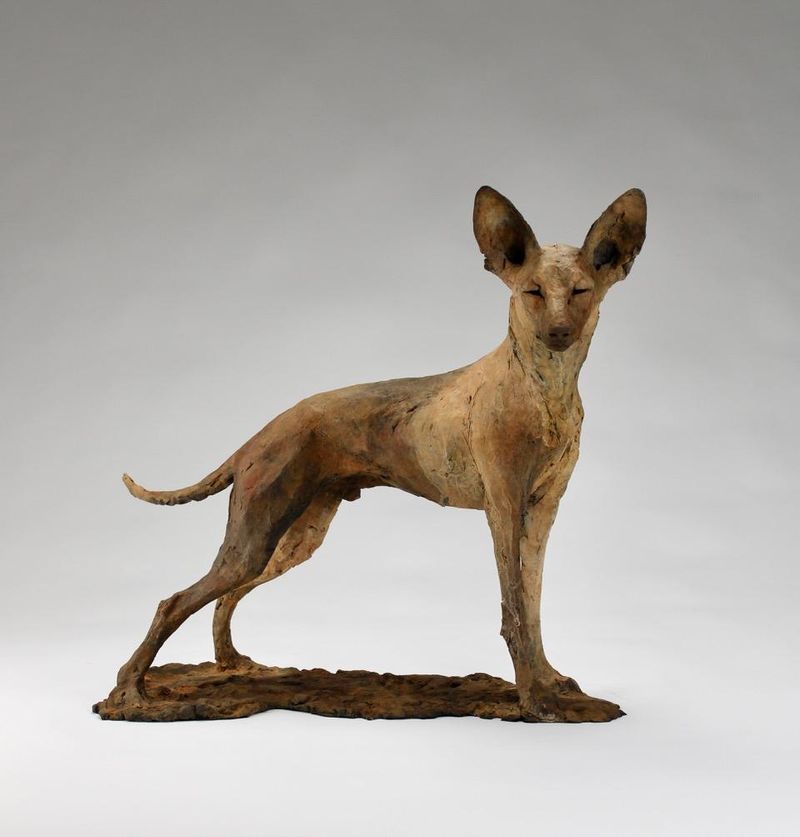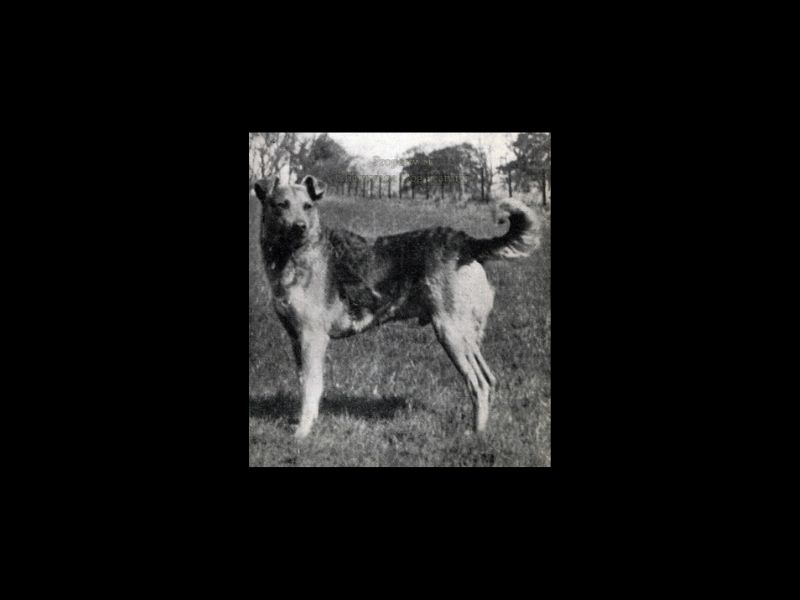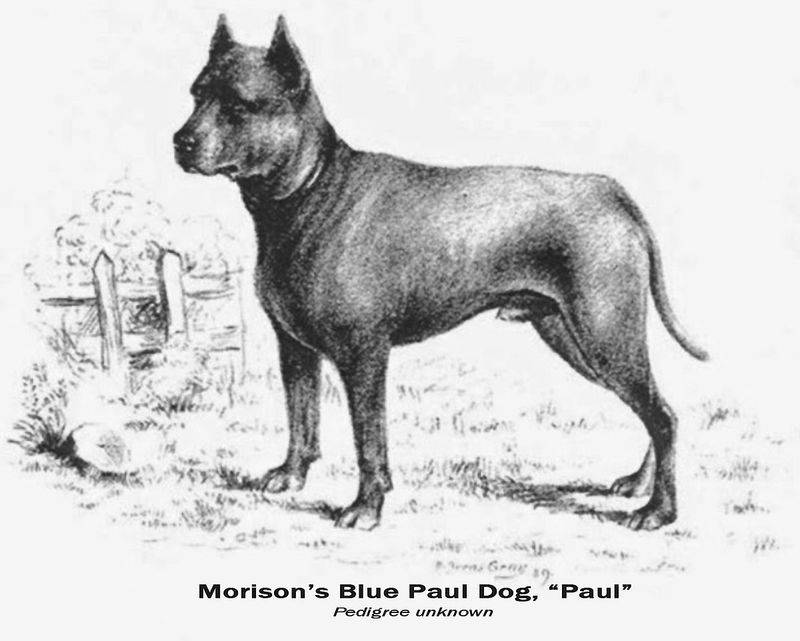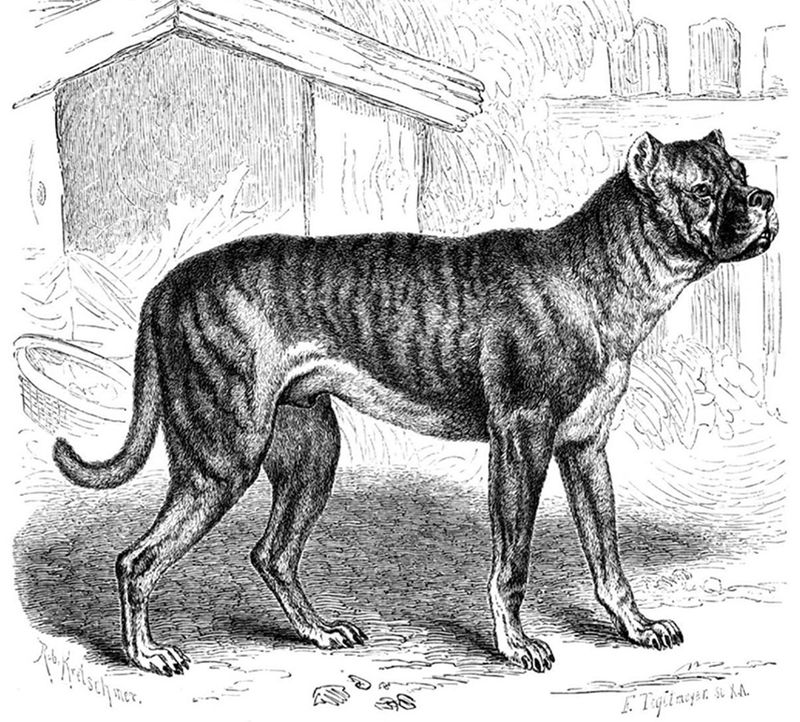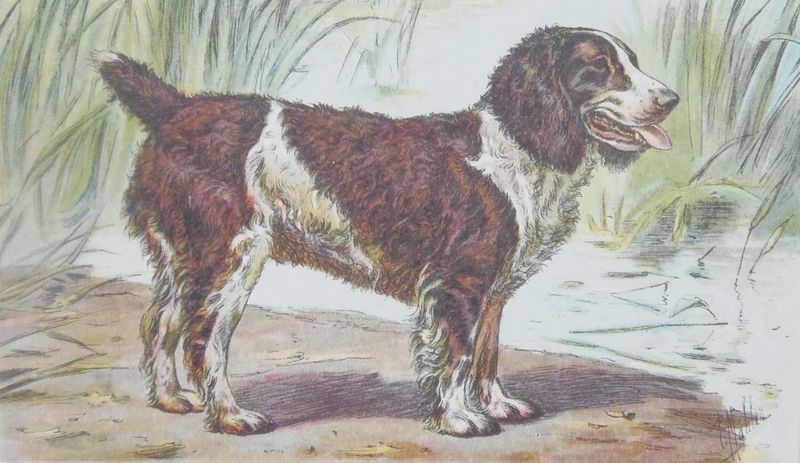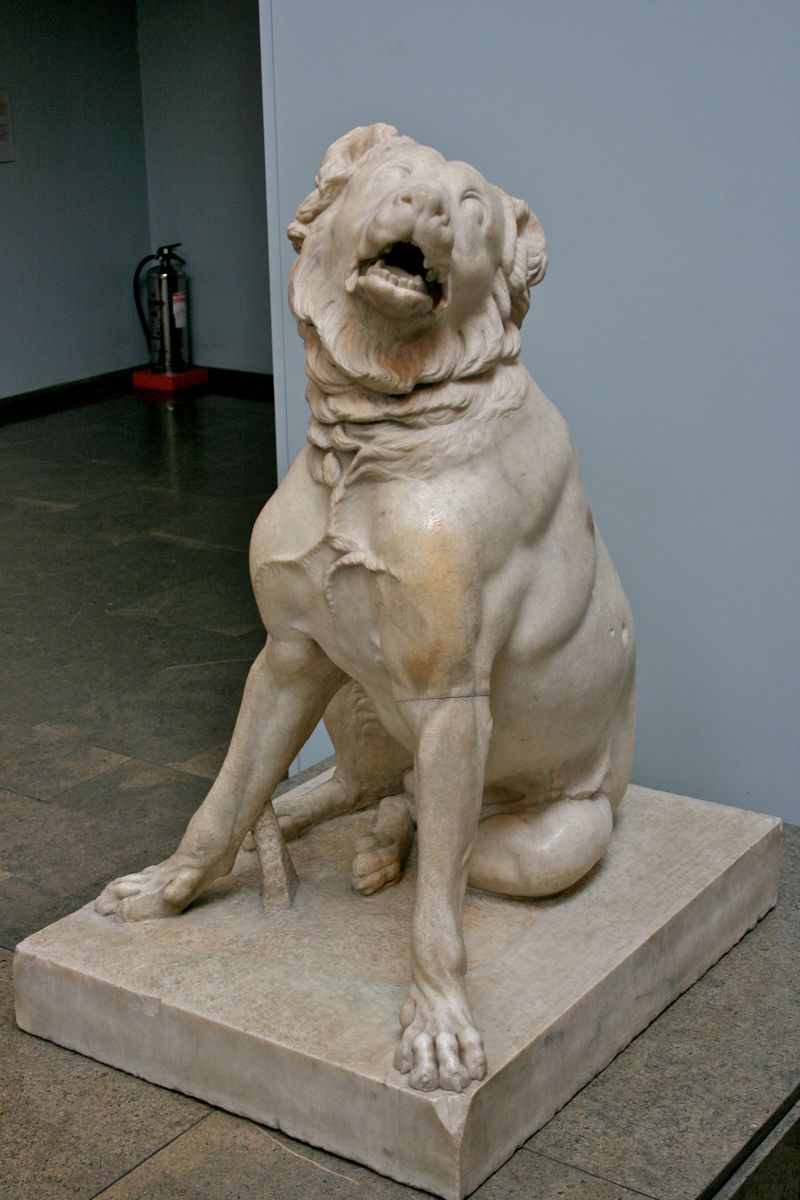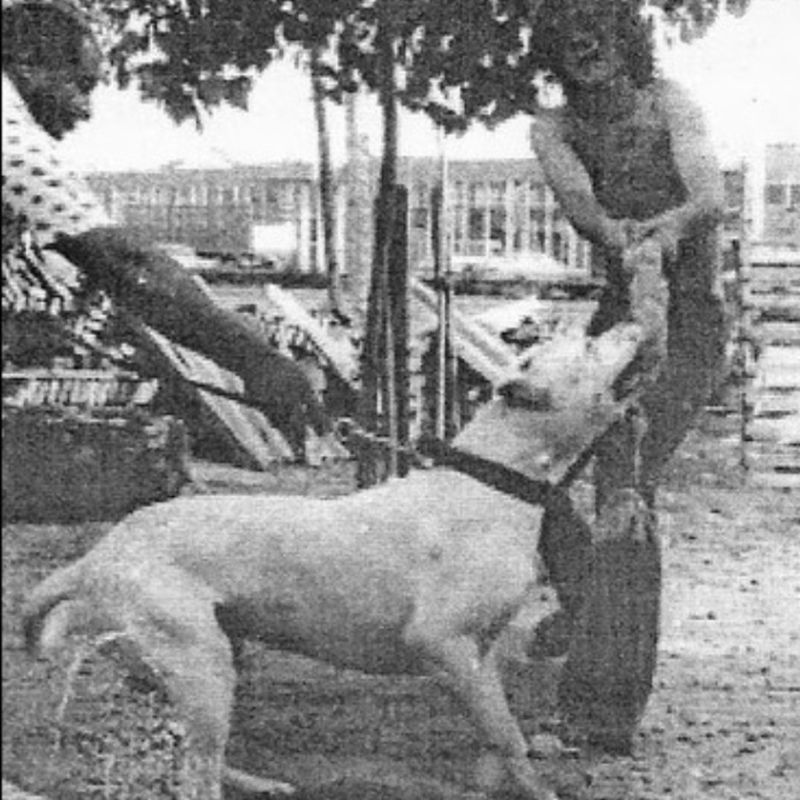Throughout history, numerous dog breeds have graced the world with their presence, only to vanish due to various reasons. Some were adored companions, while others served specific purposes that became obsolete. Understanding these lost breeds offers a glimpse into a bygone era and highlights the ever-evolving relationship between humans and dogs. Here, we explore 19 extinct dog breeds, each with its own unique story of disappearance, providing insights into both historical contexts and human impact on canine evolution.
Alpine Mastiff
The Alpine Mastiff, known for its massive size and strength, once roamed the Swiss Alps. This breed, often compared to modern Saint Bernards, was used as a guard and rescue dog. Its disappearance came about as a result of crossbreeding aimed at enhancing traits for better alpine rescue dogs.
The integration with Saint Bernards led to its genetic dilution. Over time, its distinct identity faded, leaving a legacy within the Saint Bernards we know today.
A symbol of strength, the Alpine Mastiff’s remarkable contribution to alpine rescue operations is fondly remembered.
Fighting Bulldog of England
The Fighting Bulldog of England was bred specifically for the brutal sport of bull-baiting. Known for its tenacity and muscular build, this breed was a favorite in the 18th century. Bull-baiting, however, faced increased opposition and was eventually banned.
With the sport’s decline, the need for such a fierce breed diminished. Breeders then focused on temperament changes, leading to the modern, gentler Bulldogs.
The Fighting Bulldog’s legacy lives through its impact on modern Bulldogs, showcasing a transformation from fighter to beloved companion.
Dogo Cubano
The Dogo Cubano, also known as the Cuban Mastiff, was a fierce guard dog used on plantations in 19th-century Cuba. Its primary role was to control slaves, showcasing its strength and aggression.
The abolition of slavery led to a decline in its usefulness, and consequently, its population dwindled. Efforts to repurpose the breed for other roles proved unsuccessful.
Today, the Dogo Cubano is remembered for its historical role rather than its contribution to canine development, leaving a complex legacy tied to a dark past.
Turnspit Dog
The Turnspit Dog, a unique breed, was once an integral part of medieval kitchens. These small dogs were specifically bred to run in wheels, turning spits for even cooking. Their presence in kitchens was essential before the advent of mechanical roasting devices.
As technology advanced, the need for Turnspit Dogs diminished, leading to their extinction. Despite their small size, they performed an important function.
Today, they are remembered as a symbol of innovation in culinary history, highlighting the unique roles dogs have played in human life.
Tahltan Bear Dog
The Tahltan Bear Dog, revered by the Tahltan people of Canada, was a small hunting dog known for its ability to assist in bear hunting. Its agility and keen senses made it an indispensable companion in the harsh Canadian wilderness.
However, the introduction of firearms and modern hunting methods reduced the necessity for such specialized hunting dogs. This transition led to their gradual disappearance.
The Tahltan Bear Dog’s legacy endures in the tales of its bravery and loyalty, reflecting the deep bond between the Tahltan people and their canine companions.
Hare Indian Dog
The Hare Indian Dog, native to northern Canada, was known for its remarkable speed and agility. Used by indigenous peoples for hunting hares, this breed exemplified adaptability to harsh climates.
With changes in hunting practices and the introduction of European breeds, the Hare Indian Dog gradually faded away. Its inability to compete with larger, more versatile breeds contributed to its decline.
Although extinct, this breed is remembered for its unique role in indigenous Canadian culture, illustrating the adaptation of dogs to specific environmental needs.
Kurī
The Kurī, brought to New Zealand by Polynesian settlers, was a medium-sized dog with distinct features. It played a significant role in Maori culture, both as a companion and food source.
European colonization led to the introduction of new dog breeds, which contributed to the Kurī’s decline through interbreeding and competition.
Despite its extinction, the Kurī remains an important symbol in Maori history, representing the cultural exchanges and challenges faced by indigenous animals in the face of colonization.
Old English Bulldog
The Old English Bulldog was a robust breed, initially bred for bull-baiting in 18th-century England. Known for its courage and tenacity, it became synonymous with the brutal sport.
Following the ban on bull-baiting, breeders sought to soften the breed’s temperament, leading to the development of the modern Bulldog. This transformation marked the decline of the Old English Bulldog.
Its legacy lives on in the modern Bulldog’s appearance, showcasing an evolution from a symbol of aggression to a gentle companion.
Paisley Terrier
The Paisley Terrier, a graceful breed, was cherished in the Victorian era for its long, silky coat and gentle demeanor. Often seen as a lapdog, it was a favored companion for the elite.
Over time, the popularity of the Paisley Terrier waned as other breeds, like the Yorkshire Terrier, gained favor. The emphasis on specific aesthetic traits led to the breed’s decline.
Today, the Paisley Terrier is remembered for its elegance and contribution to the development of modern toy breeds, symbolizing the shifting trends in canine fashion.
Salish Wool Dog
The Salish Wool Dog, native to the Pacific Northwest, was valued for its thick, woolly coat, used in weaving blankets by indigenous tribes. This breed was carefully managed to maintain the quality of its wool.
The introduction of sheep and other wool sources diminished the need for the Salish Wool Dog, leading to its extinction. Despite its loss, the breed holds cultural significance.
Its wool contributed to the textile traditions of indigenous people, showcasing a unique human-animal relationship centered on sustainability and resourcefulness.
Southern Hound
The Southern Hound, a medieval English breed, was renowned for its keen sense of smell and hunting capabilities. It thrived in the dense forests, tracking game with precision.
As hunting practices evolved and newer breeds emerged, the Southern Hound’s popularity waned. Its specific skills became less valued in the changing landscape of hunting.
Though extinct, the Southern Hound’s contribution to the development of modern hound breeds is acknowledged, highlighting an era when specialized hunting dogs were integral to survival.
Tesem
The Tesem, an ancient Egyptian breed, was often depicted in hieroglyphs and known for its sleek build and upright ears. Revered in ancient times, it was associated with royalty and often found in noble households.
Over centuries, the breed faded, likely due to changes in cultural practices and the introduction of foreign breeds. Its distinct characteristics merged into other regional dogs.
The Tesem represents the historical significance of dogs in ancient Egypt, reflecting their roles in society and mythology, immortalized in artifacts that endure to this day.
Toy Bulldog
The Toy Bulldog, a miniature version of the Bulldog, was developed in 19th-century France. It was cherished for its compact size and friendly demeanor, appealing to city dwellers.
However, difficulties in breeding a small, healthy Bulldog led to its decline. The emergence of the French Bulldog further overshadowed the Toy Bulldog.
Though it no longer exists, the Toy Bulldog’s influence is seen in its French cousin, highlighting the experimentation in breeding that shaped modern canine companions, particularly in urban settings.
Welsh Hillman
The Welsh Hillman, a hardy herding breed, was known for its agility and stamina in the hills of Wales. It excelled at managing livestock in challenging terrains.
As farming practices modernized and border collies gained prominence, the demand for Welsh Hillmen declined, leading to their extinction.
Although no longer seen in the Welsh hills, this breed’s legacy endures in the stories of skilled herding and adaptability, reflecting the evolution of agricultural practices and the breeds that supported them.
Blue Paul Terrier
The Blue Paul Terrier, originating in Scotland, was a formidable fighting dog known for its distinctive blue coat. It was a popular choice among sailors and dockworkers in the 19th century.
With the decline of dog fighting and changes in societal attitudes, the breed’s purpose vanished, leading to its gradual disappearance.
Though extinct, the Blue Paul Terrier’s legacy is part of Scotland’s rich canine history, reflecting a time when dog breeds were shaped by local customs and the demands of working-class life.
Bullenbeisser
The Bullenbeisser, a German breed, was a powerful hunting dog used for big game. Its strong build and tenacious spirit made it an asset in 19th-century hunting expeditions.
Crossbreeding with English Bulldogs led to the development of the modern Boxer, erasing the Bullenbeisser’s pure lineage. The breed’s distinct traits, however, live on.
The Bullenbeisser’s transformation into the Boxer represents the adaptability and evolution of dog breeds to meet changing human needs, from hunting companion to family pet.
English Water Spaniel
The English Water Spaniel, admired for its excellent swimming and retrieval skills, was a favorite among waterfowl hunters in 18th-century England. Its curly coat provided protection against cold waters.
As waterfowl hunting declined and newer spaniel breeds emerged, the English Water Spaniel’s role diminished, leading to its extinction.
This breed’s contribution to the development of modern retrievers is significant, showcasing the specialized skills valued in historical hunting practices, now adapted in contemporary breeds.
Molossus
The Molossus, a large and powerful breed from ancient Greece and Rome, was known for its loyalty and strength. Used as a war and guard dog, it embodied the might of ancient civilizations.
Over time, its lineage was absorbed into various European breeds, including mastiffs and other large dogs, leading to its extinction.
Despite its disappearance, the Molossus’s legacy endures in the formidable traits found in many modern breeds, reflecting its historical significance as a protector and companion in ancient times.
Cordoba Fighting Dog
The Cordoba Fighting Dog, bred in Argentina, was known for its unparalleled aggression and strength, used in dog fighting in the early 20th century.
However, its ferocity made it difficult to manage, even as a companion, leading to its decline. Efforts to repurpose its traits gave rise to the Dogo Argentino, a more balanced hunting breed.
The transformation from Cordoba Fighting Dog to Dogo Argentino illustrates the shift in breeding goals from aggression to versatility and companionship, adapting to changing societal values.
